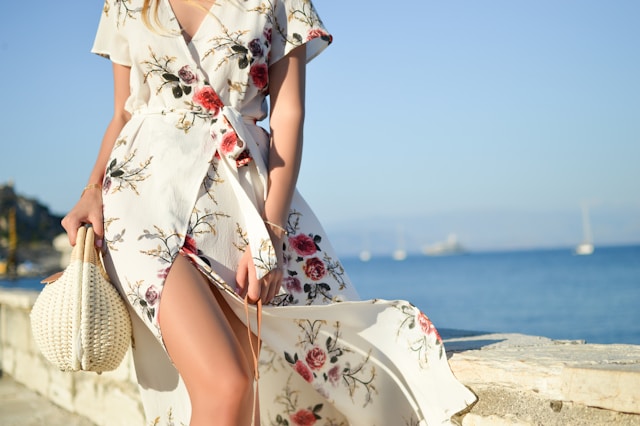Are you prepared to dive into the creative waters and tailor your ideal dress, much like casting a line in the exhilarating big bass splash game? Dresses serve as a testament to personal flair and the rich tapestry of cultural history, transforming from the ancient toga to the structured elegance of Victorian attire. Irrespective of whether you’re an experienced fashion artisan or just starting, this manual is your lure, offering vital insights to craft dresses that truly make a splash. Join us as we explore the artistry behind dress design.
Preparing for Dress Design
Before you dive into designing, it’s crucial to master the basics. Familiarize yourself with various dress styles and fabrics to enhance your creative process. Understanding the history and terminology of fashion will set you on the right path.
Exploring Dress Styles
- The A-line Dress: Known for its feminine silhouette, the A-line dress features an empire waist and flares out into an A-shape towards the knees.
- Maxi Dresses: Elegant and flowy, maxi dresses often reach the ground and are suitable for formal or casual occasions.
- Peplum Dresses: Dresses with flared skirts, sleeves, or necklines are both flirty and office-appropriate.
- Sheath Dresses: Timeless and figure-flattering, sheath dresses come in various sleeve lengths and styles.
- Shift Dresses: Characterized by a horizontal seam, shift dresses were iconic in the 1960s.
- Skater Dresses: Informal A-line variations inspired by figure skaters.
- T-shirt Dresses: Essentially oversized T-shirts transformed into dresses.
- Wrap Dresses: Defined by a V-neck and a fabric wrap closure, highlighting the hourglass figure.
Popular Dress Fabrics
Selecting the right fabric is pivotal in dress design. Here are some popular choices:
- Chiffon: This gauzy, transparent fabric is ideal for formal dresses and wedding gowns.
- Crepe: Known for its crinkled texture, crepe is versatile and used in evening dresses and formal wear.
- Linen: Lightweight and breathable, linen is perfect for warm-weather dresses.
- Silk: A luxurious natural fiber with a unique shine, ideal for various fashion styles.
- Satin: An affordable alternative to silk, often used for its smooth finish.
The Creative Process
Now that you’re familiar with dress terminology and fabrics, let’s start the creative journey.
Creative Direction
Begin by establishing the artistic tone and direction for your clothing line. Understand your ideal client and their needs. Mood boards are invaluable tools to refine your dress design ideas, helping you decide on aesthetics, color schemes, and silhouettes.
Sketching
As you start sketching your dress designs, consider colors, shapes, and fabrics. Think about how the fabric should drape on the customer’s body, considering their body type. Utilize various methods, from traditional pencil and paper to digital tools like Adobe Illustrator.
Sourcing Textile
Fabric selection plays a pivotal role in your dress’s success. The colors and textures you choose convey your design’s vibe. Explore local fabric shops and hobby stores for samples that match your vision. The choice of fabric also depends on your budget and target consumer.
Pattern Making
Collaborate with a pattern maker to turn your dress ideas into actual patterns. Think of patterns as blueprints for tailors and the foundation for your designs. Depending on your design, you may need to drape fabrics with your pattern maker to convey your vision.
Sample Clothing
Once you’re satisfied with your patterns, send them to a sample manufacturer to bring your dress designs to life. These prototypes will undergo revisions before they are fully realized. You can showcase your dresses in fashion shows, magazine shoots, or sell them online or in physical stores.
Marketing Your Dress Designs
Once you’ve created your stunning dresses, it’s time to share them with the world. Effective marketing is crucial to getting your designs noticed and sold.
Building Your Brand
Establishing a brand identity is essential. Create a memorable brand name, logo, and tagline that reflect your design philosophy. Consistency in branding across your website, social media, and marketing materials helps build trust with your audience.
Online Presence
In today’s digital age, having a strong online presence is vital. Here’s how to do it effectively:
- Website: Develop a user-friendly website showcasing your dress designs. Include high-quality images, detailed descriptions, and an easy-to-navigate online store.
- Social Media: Utilize platforms like Instagram, Facebook, Pinterest, and TikTok to share captivating visuals of your dresses. Engage with your audience through regular posts, stories, and reels.
- Blogging: Maintain a fashion blog on your website. Write informative articles about dress trends, styling tips, and fashion advice. This not only attracts readers but also establishes you as an authority in the field.
- Email Marketing: Build an email list of potential customers. Send out newsletters featuring new dress releases, promotions, and style tips.
Collaborations
Collaborate with influencers and fashion bloggers to promote your dresses. Their endorsement can significantly boost your brand’s visibility. Choose influencers whose style aligns with your brand to reach a relevant audience.
Local Events and Pop-Up Shops
Participate in local fashion events, craft fairs, and pop-up shops to showcase your designs in a physical setting. This allows you to connect with potential customers and receive immediate feedback.
Pricing and Production
Determining the right pricing strategy is essential for your dress business. Consider factors such as materials, labor, overhead costs, and desired profit margins when setting prices. It’s crucial to find a balance between affordability and maintaining profitability.
In terms of production, you can choose to create dresses in-house or collaborate with manufacturers. Each option has its pros and cons, so weigh them carefully based on your budget and business model.
Legal Considerations
Protect your intellectual property by trademarking your brand name and logo. Familiarize yourself with copyright laws, especially if you plan to sell patterns or digital designs. Consult with legal professionals to ensure compliance with all legal requirements.
Conclusion
Designing dresses is an exciting and creative journey. With the right knowledge, skills, and marketing strategies, you can turn your passion into a successful dress design business. Remember to stay innovative, keep up with fashion trends, and always prioritize the quality of your designs.




